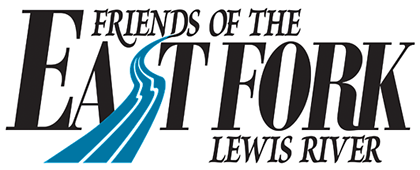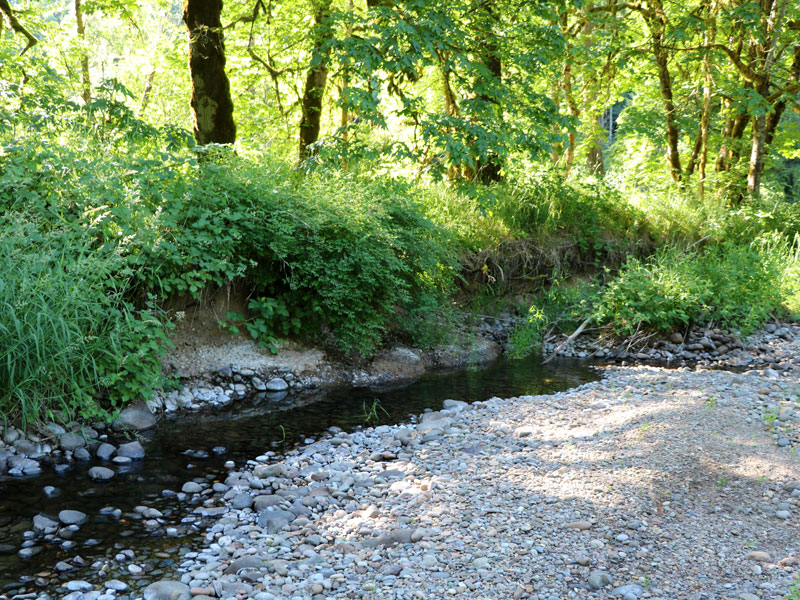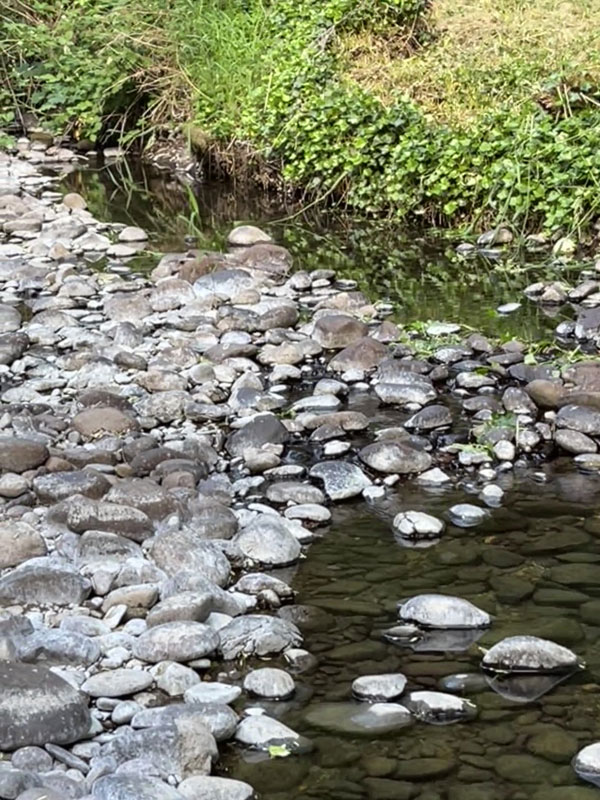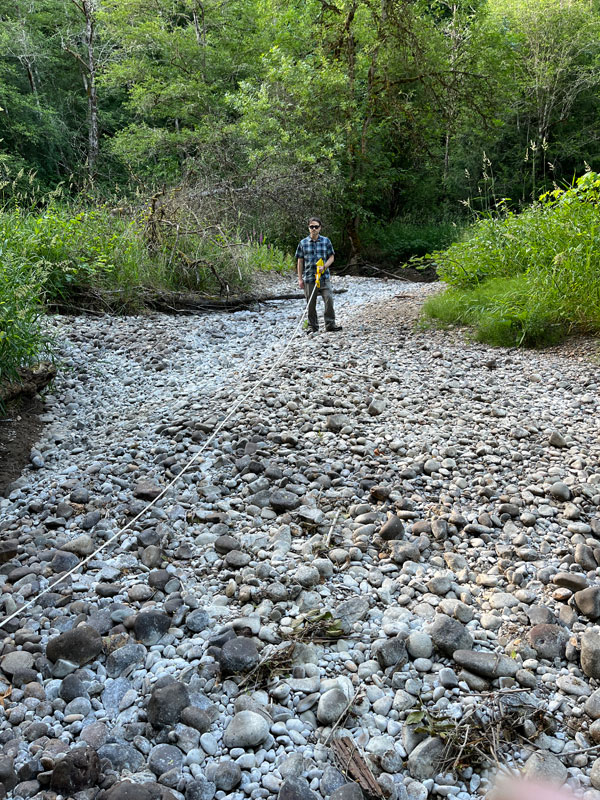A Key Tributary Of The East Fork Lewis River
Update June 22, 1923
The East Fork of the Lewis River has at least 5 major tributary creeks that are relatively high producers of salmon and steelhead fry and juveniles as a result of spawning by adult fish. Also, adding to that, Bonneville Power did a study of the Columbia River Basin and determined that much of the Columbia River salmonid fish production comes from these small tributary streams.
Mason Creek is one of these that has had a WA Dept. F&W survey that verified a relatively high level of salmonid spawning and fish production by Coho salmon and steelhead species. The creek is located about 3 miles east of the town of La Center and flows in from the north on to the outlet on the north bank of the East Fork about a mile down from the J. A. Moore Road bridge.
Upstream, Mason Creek splits into a number of even smaller channels that are prolific fish producers. However, due to the unique near the stream surface geology of the upper part of the Mason Creek Watershed, groundwater retention and outflow of stream flow begins to dry up in late spring, resulting in many newly hatched fish being trapped in shallow pools, if they haven’t migrated earlier to downstream larger pools or migrated out to the East Fork on their way to the Pacific Ocean.
Friends of the East Fork (FOEF) and other organizations such as the Lower Columbia Fish Recovery Group (LCFRG) have done habitat improvement work in Mason Creek in several different locations. In addition, the Dave Brown Wild Fish Rescue Team collects salmon fry and juveniles from shrinking pools in the late spring before the pools dry up and all the fish are lost. They raise them in special high-tech sites and return them to Mason Creek when the fall rainy season returns.
Recently a large Mason Creek culvert located high upstream in a relatively narrow draw, collapsed, backed up a lot of water, and then broke apart sending a wall of water that tore up the downstream streambanks and filled up many of the fish holding pools below, with large gravel and cobble sized (7 inch to 13 inch) rock.
FOEF is working with local streamside landowners to stabilize the damaged streambank habitat and restore key fish holding pools. Also, the LCFRG is looking into potential ways to add more water flow into upper Mason Creek during the critical spring early summer salmon and steelhead out-migration period and extend the life of key fish holding and rearing pools thru the summer till the rains come again. This is a collaborative team effort.
This project may require grant funding, in-kind donations of restoration materials such as logs and ballast rock and equipment, and full support of volunteers. We will keep you posted as restoration plans now under development, are completed for the implementation process.
Other FOEF major activities includes providing technical support to other non-profit organizations as well as being involved in local water concerns, good land stewardship issues, and Clark County compliance accountability. FOEF has several members who are retired highly skilled people, as well as our members who volunteer their time and support for our stream related projects.




